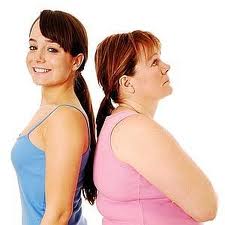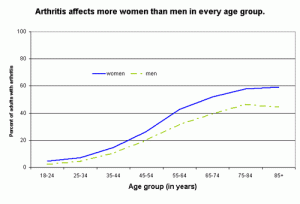 Why are some people obese while others are lean? Obese people must make poor eating choices, but could there be a physiological basis for those poor choices? A new study reveals that obese and lean people make decisions about short-term versus long-term rewards differently and have physical differences in their brains. Surprisingly, some of these behavioral and physical differences are found only in women.
Why are some people obese while others are lean? Obese people must make poor eating choices, but could there be a physiological basis for those poor choices? A new study reveals that obese and lean people make decisions about short-term versus long-term rewards differently and have physical differences in their brains. Surprisingly, some of these behavioral and physical differences are found only in women.
An article recently published in the journal Frontiers in Human Neuroscience tested how lean and obese people relate to rewards using a simple card game. In this game, participants had to choose between two decks of cards. One deck provided large immediate rewards but overall losses in the long-term. This deck was meant to parallel the immediate reward of eating and the long-term negative effect of overeating on body weight. The other deck gave subjects smaller immediate rewards but was more advantageous in the long run. This deck represented healthier eating choices – less fulfilling immediately but more beneficial in the long term.
The researchers found that obese women choose immediate rewards more often than lean women. In fact, as the body mass index or BMI of the subjects increased, so did the number of times that they chose from the deck that provided large immediate rewards.
Additionally, as they played this card game over time lean women altered their choices and started to choose more cards from the deck that was advantageous in the long run. In contrast, obese women did not change their decision-making over time and continued to choose just as many cards from the deck that provided large immediate rewards but overall losses as the game progressed.
Remarkably, these behavioral differences between lean and obese participants were limited to women. No difference was seen between lean and obese men.
To investigate the possible basis of the behavioral differences between subjects, the brain structure of lean and obese men and women was examined using magnetic resonance imaging or MRI. Differences in brain structure between obese and lean people have been reported previously. This study found additional differences that were only present in obese versus lean women and not men.
Both the behavior and brain structure of the obese women observed in this study suggest that obese women might make poor eating choices because they are more sensitive to rewards and are driven more by habit-like behavior rather than goal-directed behavior. It is not known, however, if the alterations in brain structure in obese individuals are themselves the cause of obesity and overeating behaviors, or if the alterations are the effect of obesity-related behaviors.
The differences in behavior and brain structure between lean and obese women uncovered in this research could be important for the development of gender-specific treatments for obesity.

 To many, a tax on soda is a no-brainer in advancing the nation’s war on obesity. Advocates point to a number of studies in recent years that conclude that sugary drinks have a lot to do with why Americans are getting fatter. But obese people tend to drink diet sodas, and therefore taxing soft drinks with added sugar or other sweeteners is not a good weapon in combating obesity, according to a new Northwestern University study.
To many, a tax on soda is a no-brainer in advancing the nation’s war on obesity. Advocates point to a number of studies in recent years that conclude that sugary drinks have a lot to do with why Americans are getting fatter. But obese people tend to drink diet sodas, and therefore taxing soft drinks with added sugar or other sweeteners is not a good weapon in combating obesity, according to a new Northwestern University study. Staying up late every night and sleeping in is a habit that could put you at risk for gaining weight. People who go to bed late and sleep late eat more calories in the evening, more fast food, fewer fruits and vegetables and weigh more than people who go to sleep earlier and wake up earlier, according to a new Northwestern Medicine study.
Staying up late every night and sleeping in is a habit that could put you at risk for gaining weight. People who go to bed late and sleep late eat more calories in the evening, more fast food, fewer fruits and vegetables and weigh more than people who go to sleep earlier and wake up earlier, according to a new Northwestern Medicine study. It has been reported in the past that obesity (body fat mass) is protective against osteoporosis and fracture. However, a recent study has documented a high prevalence of obesity in postmenopausal women with fragility fracture.
It has been reported in the past that obesity (body fat mass) is protective against osteoporosis and fracture. However, a recent study has documented a high prevalence of obesity in postmenopausal women with fragility fracture. Addictive eating behavior and substance dependence have similar patterns of brain activity, finds a new study from the Rudd Center for Food Policy and Obesity at Yale. The study is published in the
Addictive eating behavior and substance dependence have similar patterns of brain activity, finds a new study from the Rudd Center for Food Policy and Obesity at Yale. The study is published in the 
 The largest study of its kind has confirmed a strong association between overweight and obesity and an increased risk of death. The study also identified a range of
The largest study of its kind has confirmed a strong association between overweight and obesity and an increased risk of death. The study also identified a range of  I just got back from a brief vacation in the Italian region of Emilia Romagna--the land of Parma ham, proscuitto, Pasta Bolognese and tasty hard cheeses. One of the regional specialties is a ravioli filled with spinach and ricotta covered in a butter sauce and sprinkled with parmesan cheese (Are your arteries choking yet?). I was immediately struck by the lack of overweight people despite these wonderful foods that are high in fat and quite salty. What is it about Italy that allows people to stay thin, yet eat these rich foods?
I just got back from a brief vacation in the Italian region of Emilia Romagna--the land of Parma ham, proscuitto, Pasta Bolognese and tasty hard cheeses. One of the regional specialties is a ravioli filled with spinach and ricotta covered in a butter sauce and sprinkled with parmesan cheese (Are your arteries choking yet?). I was immediately struck by the lack of overweight people despite these wonderful foods that are high in fat and quite salty. What is it about Italy that allows people to stay thin, yet eat these rich foods? Weight gain during menopause continues to be a challenge to women. About 30% of women aged 50-59 are not just overweight, but obese. This weight gain increases one's risk for high blood pressure, heart disease, and diabetes. Just when we are getting used to the other symptoms often associated with menopause (hot flashes, insomnia, etc), we now have to worry about other serious chronic diseases! It's hard not to say, "aging is not for sissies".
Weight gain during menopause continues to be a challenge to women. About 30% of women aged 50-59 are not just overweight, but obese. This weight gain increases one's risk for high blood pressure, heart disease, and diabetes. Just when we are getting used to the other symptoms often associated with menopause (hot flashes, insomnia, etc), we now have to worry about other serious chronic diseases! It's hard not to say, "aging is not for sissies". In 2006, the Center for Disease Control and Prevention (CDC) reported that 21.6% of the US adult population reported arthritis, with significantly higher prevalence in women than in men (24.4% vs. 18.1%). Arthritis prevalence increased with age and was higher among women than men in every age group. With the aging of the US population, the prevalence of doctor-diagnosed arthritis is expected to increase in the coming decades. By 2030, it is estimated that 67 million adults age 18 and older will have arthritis, compared with the current 46 million. Also, by 2030 an estimated 25 million adults will report arthritis-attributable activity limitations.
In 2006, the Center for Disease Control and Prevention (CDC) reported that 21.6% of the US adult population reported arthritis, with significantly higher prevalence in women than in men (24.4% vs. 18.1%). Arthritis prevalence increased with age and was higher among women than men in every age group. With the aging of the US population, the prevalence of doctor-diagnosed arthritis is expected to increase in the coming decades. By 2030, it is estimated that 67 million adults age 18 and older will have arthritis, compared with the current 46 million. Also, by 2030 an estimated 25 million adults will report arthritis-attributable activity limitations.